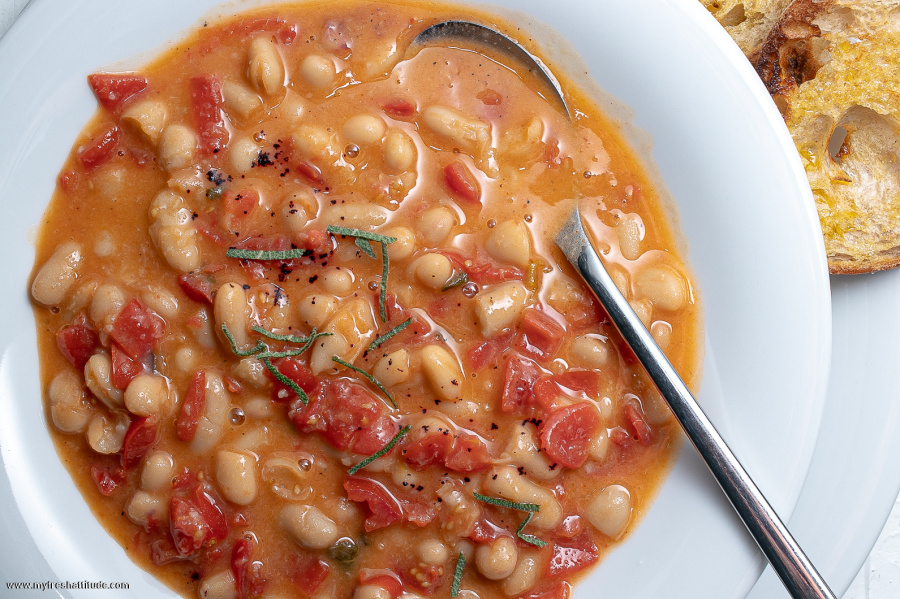
White Beans with Tomatoes – The Quick Version
Cooking beans of all types is a very Italian thing to do in the kitchen. Cooking white beans and combining them with garlic, sage and tomatoes is a popular way Tuscans enjoy their beans…and something I relished making and serving while hanging out in Tuscany.
I remember having this romantic notion that I should pop my soaked beans into a glass, then bury the glass in hot ashes inside a fireplace. This was, after all, the classic preparation of fagioli al fiasco, made famous in the book Under the Tuscan Sun.
I never attempted that classic preparation; it seemed like
Subscription Required For This Content
Cooking beans of all types is a very Italian thing to do in the kitchen. Cooking white beans and combining them with garlic, sage and tomatoes is a popular way Tuscans enjoy their beans…and something I relished making and serving while hanging out in Tuscany.
I remember having this romantic notion that I should pop my soaked beans into a glass, then bury the glass in hot ashes inside a fireplace. This was, after all, the classic preparation of fagioli al fiasco, made famous in the book Under the Tuscan Sun.
I never attempted that classic preparation; it seemed like too much trouble. Plus, I never could find the right kind of glass to use, which led me to believe most people in Tuscany don’t cook their beans in a glass buried in hot ashes. It sounds good in a book or movie, but in reality, who’s going to soak beans for 12 hours and cook them another 6-8 hours? That’s a lot of trouble for a rustic dish.
When it came to cooking beans in the past, I considered myself a purist – probably even a bit snobbish. I preferred the long soaking times that soften the outer surfaces of beans, followed by the hour or two it took to cook them properly. I was able to add aromatics to the cooking water to give my beans added flavor. I decided when to add the salt…and how much salt to add. And I kept telling my fragile chef’s ego that the beans tasted better…they must because I cooked them in a traditional manner.
The truth is…I was fooling myself. Cooking dried beans often led to uneven cooking – some turned out delightfully mushy, while others had a bite that was more than al dente. So, I’m slowly coming around to the idea of using canned beans in some of my preparations…and I like the idea of having instant access to consistently cooked beans. When I weigh the benefits of canned vs. dried beans, canned beans usually win (but not with hummus…that’s my red line).
I’ve come to appreciate using canned beans as a simple way to cook a tasty and nutritious meal while traveling…and canned beans are easily accessible in most supermarkets everywhere.
Tip – it’s simple to convert recipes calling for dried beans because most dried beans double in volume and weight once cooked…and that’s some simple math to work with (250 grams of dried beans equal 500 grams of cooked – or, if you prefer, 1/4 pound of dried beans equals 1/2 pound of cooked.
I think the best way to cook white beans is with plenty of sage and garlic. I make sure to use the best extra virgin olive oil I can find; this is one time that the authentic fruity flavor of good oil matters. The oil also emulsifies with the bean liquid and turns into a creamy mass of liquid goodness that coats the beans.
Try giving the beans some added life – some zing in the mouth – by adding a splash of fruity white wine vinegar or lemon juice with as many chili peppers as you like…additions that will have your mouth dancing.
Any white bean variety works with this recipe, but cannellini beans offer a more authentic Italian note…one that must be close to slowly cooked beans in a jar.
Difficulty: simple
Yield: makes about 6-8 servings